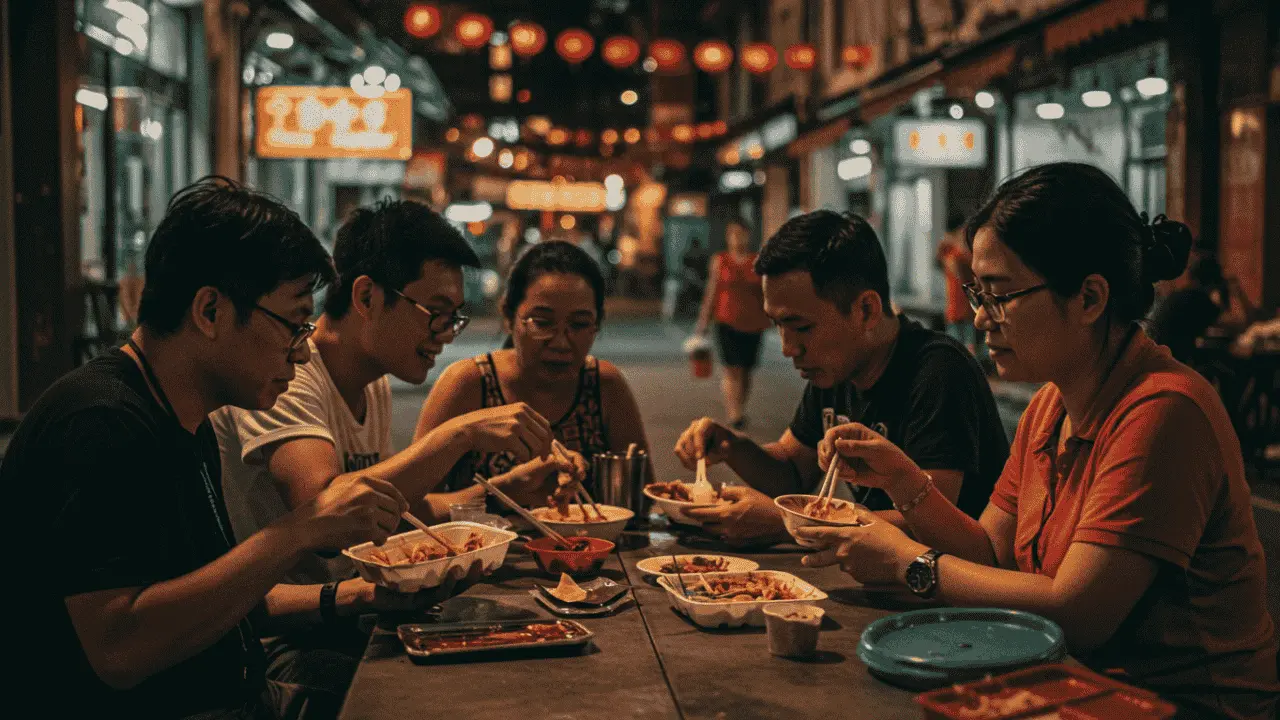Chinatown Hawker Leftovers Consumption: A Guide to Safe and Sustainable Eating
As food lovers explore vibrant markets across Asia, many discover the unique scene of Chinatown hawker leftovers consumption. This practice involves enjoying leftover or surplus food from popular hawker stalls, which offers a sustainable way to reduce food waste and access affordable meals. While the idea sparks curiosity and sometimes debate, it also reflects changing attitudes toward sustainability and community care.
Understanding Chinatown Hawker Leftovers Consumption
In many Chinatowns, hawker centers serve as the heart of community dining. After peak hours, vendors often find themselves with unsold food. Instead of throwing these leftovers away, some stallholders choose to sell them at discounted prices or donate them to those in need. This approach helps local residents save money and reduces the environmental impact of wasted food.
Why Do People Consume Hawker Leftovers?
Several factors motivate individuals to participate in Chinatown hawker leftovers consumption. First, many people recognize the value of minimizing food waste and wish to support sustainable practices. Additionally, budget-conscious students, workers, and seniors often appreciate the opportunity to buy freshly made food at lower prices. Some communities also promote this custom as a way to foster generosity and help neighbors who might otherwise go hungry.
Is It Safe to Eat Chinatown Hawker Leftovers?
When you choose to eat hawker leftovers, safety should remain your top priority. Although many vendors handle food with care, leftover meals may spend more time at room temperature, increasing the risk of spoilage. As a result, always look for stalls that maintain high hygiene standards and keep leftovers properly stored. Furthermore, consuming the food soon after purchase reduces the risk of eating spoiled items.
Tips for Safe Chinatown Hawker Leftovers Consumption
-
Buy from trusted stalls: Choose vendors with a reputation for cleanliness and food safety.
-
Check food freshness: Inspect leftovers for signs of spoilage, such as off smells, odd textures, or discoloration.
-
Consume quickly: Eat leftovers as soon as possible, ideally within an hour of purchase.
-
Ask questions: Don’t hesitate to ask vendors about their storage methods and how long the food has been out.
-
Avoid high-risk foods: Steer clear of perishable items like seafood, dairy, or raw dishes if you have concerns.
The Sustainability and Community Impact
Chinatown hawker leftovers consumption not only saves money but also contributes to a greener environment. By reducing the amount of food sent to landfills, communities lower greenhouse gas emissions and make better use of natural resources. This practice also fosters a sense of solidarity, as vendors, residents, and volunteers collaborate to ensure food reaches those who need it most.
Cultural Perspectives on Leftover Food
Attitudes toward leftover food vary widely. In some cultures, people may view leftovers as unappealing or a sign of hardship. However, many urban communities now embrace food rescue and redistribution as practical and ethical solutions to hunger and waste. As public awareness grows, Chinatown hawker leftovers consumption increasingly symbolizes resourcefulness and community spirit.
Frequently Asked Questions About Chinatown Hawker Leftovers Consumption
Is it legal to buy and eat hawker leftovers in Chinatown?
Generally, purchasing leftovers from hawker stalls is legal if vendors follow local health and safety regulations. Always check the rules in your specific city.
How can I tell if the leftovers are still safe to eat?
Look for food that smells fresh, feels the right texture, and hasn’t been sitting out for too long. Trusted vendors will answer your questions about storage and freshness.
Do many people actually buy hawker leftovers?
Yes, students, workers, and budget-conscious individuals often seek out these affordable options, especially in busy urban centers.
Are there organizations that help distribute Chinatown hawker leftovers?
Some communities have non-profit groups that collect and redistribute unsold hawker food to those in need, promoting food security and waste reduction.
Does eating leftovers help the environment?
Absolutely! Consuming hawker leftovers reduces food waste, which in turn cuts down on landfill use and greenhouse gas emissions.
Can tourists try hawker leftovers?
Tourists are welcome to join this sustainable practice, provided they follow local guidelines and exercise the same caution as locals.
What foods are safest as leftovers?
Cooked rice, noodles, vegetables, and meats that have been kept warm are typically safer. Avoid raw or highly perishable items unless you are certain of their freshness.
Conclusion:
Chinatown hawker leftovers consumption offers a practical, sustainable, and community-driven approach to reducing food waste and supporting affordable dining. By choosing trusted vendors, checking for freshness, and consuming leftovers responsibly, you can enjoy delicious meals while making a positive impact on both your wallet and the environment.
